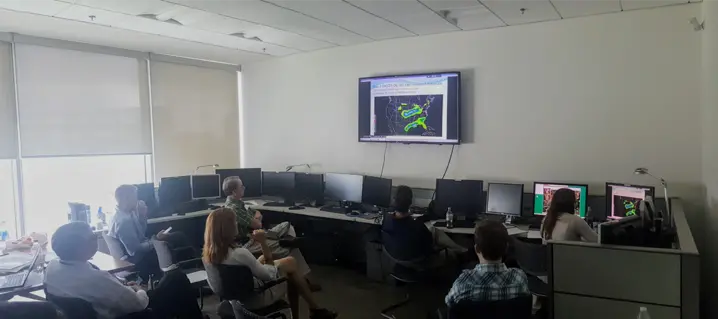
Research: Improving probabilistic forecasts of high-impact weather with the CSU-Machine Learning Probabilities system
This research, sponsored by NOAA's Joint Technology Transfer Initiative, continues our long-running collaboration with the Weather Prediction Center to improve forecasts of excessive rainfall. Former graduate student Greg Herman developed a forecast system that uses "reforecasts" (retrospective forecasts using an unchanging forecast model) and past observations, along with machine learning algorithms, to make probabilistic forecasts of excessive rainfall. This system is known as the "CSU-Machine Learning Probabilities" forecast system, and has been transitioned into operational use at WPC, where forecasters can now use these forecasts as a "first guess" in generating their Excessive Rainfall Outlooks on days 1-3.
In research led by Aaron Hill, we have explored whether incorporating higher-resolution numerical model output into the machine-learning system can yield improved forecasts at shorter lead times. We routinely provide these forecasts for evaluation at the Flash Flood and Intense Rainfall (FFaIR) testbed experiment, and use the feedback from the testbed to make further improvements to the system.
In ongoing work, we have developed a similar system for severe weather hazards (tornadoes, large hail, and damaging winds), and are working to extend the guidance for both excessive rainfall and severe weather out to longer lead times.
This work was featured on 9News in Denver in July 2017 and in CSU's Source in November 2021.
Link to real-time CSU-MLP forecast graphics
Papers describing the CSU-MLP system:
- Hill, A.J., R.S. Schumacher, and I.L. Jirak, 2023: A new paradigm for medium-range severe weather forecasts: probabilistic random forest-based predictions. Weather and Forecasting, in press.
- Hill, A.J., and R.S. Schumacher, 2021: Forecasting excessive rainfall with random forests and a deterministic convection-allowing model. Weather and Forecasting, 36, 1693-1711.
- Schumacher, R.S., A.J. Hill, M. Klein, J.A. Nelson, M.J. Erickson, S.M. Trojniak, and G.R. Herman, 2021: From random forests to flood forecasts: A research to operations success story. Bulletin of the American Meteorological Society, 102, E1742-E1755.
- Herman, G.R., and R.S. Schumacher, 2018: "Dendrology" in Numerical Weather Prediction: What random forests and logistic regression tell us about forecasting extreme precipitation. Monthly Weather Review, 146, 1785-1812.
- Herman, G.R., and R.S. Schumacher, 2018: Money doesn't grow on trees, but forecasts do: Forecasting extreme precipitation with random forests. Monthly Weather Review, 146, 1571-1600.
- Hill, A.J., G.R. Herman, and R.S. Schumacher, 2020: Forecasting severe weather with random forests. Monthly Weather Review, 148, 2135–2161.
- Hill, A.J., and R.S. Schumacher, 2021: Forecasting excessive rainfall with random forests and a deterministic convection-allowing model. Weather and Forecasting, 36, 1693-1711.
- Schumacher, R.S., A.J. Hill, M. Klein, J.A. Nelson, M.J. Erickson, S.M. Trojniak, and G.R. Herman, 2021: From random forests to flood forecasts: A research to operations success story. Bulletin of the American Meteorological Society, 102, E1742-E1755.


